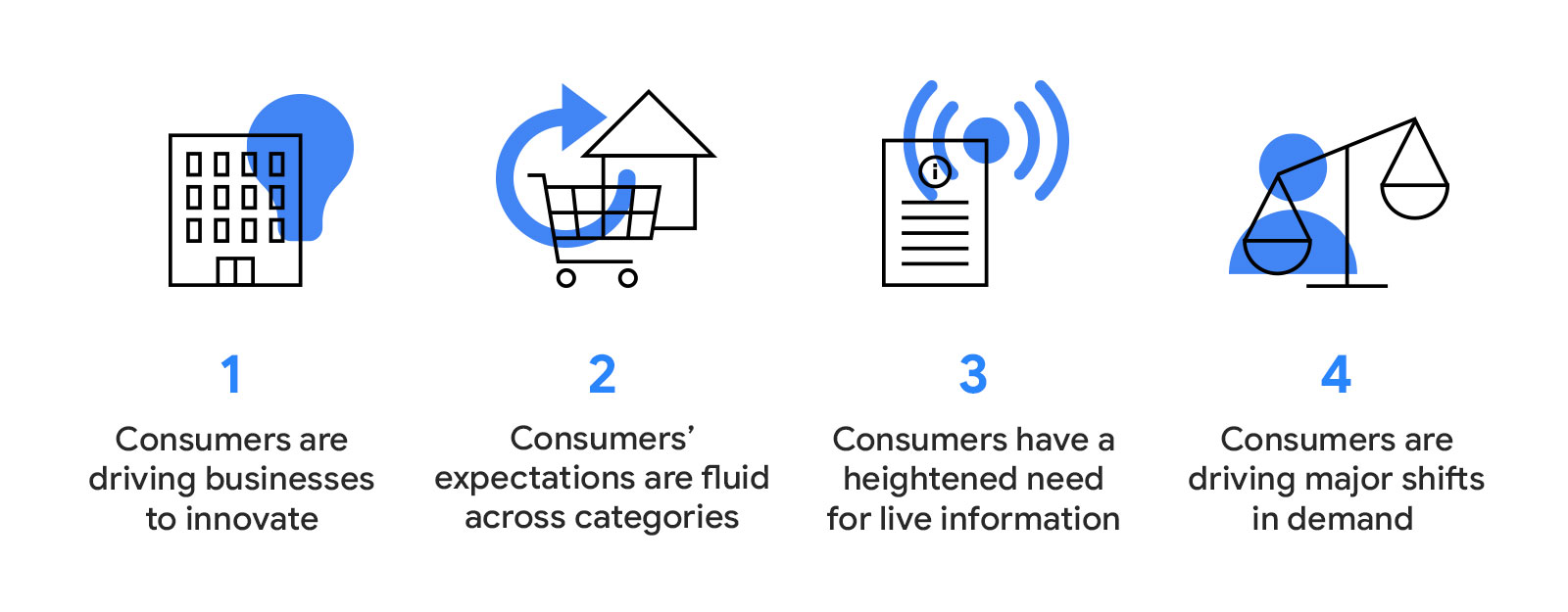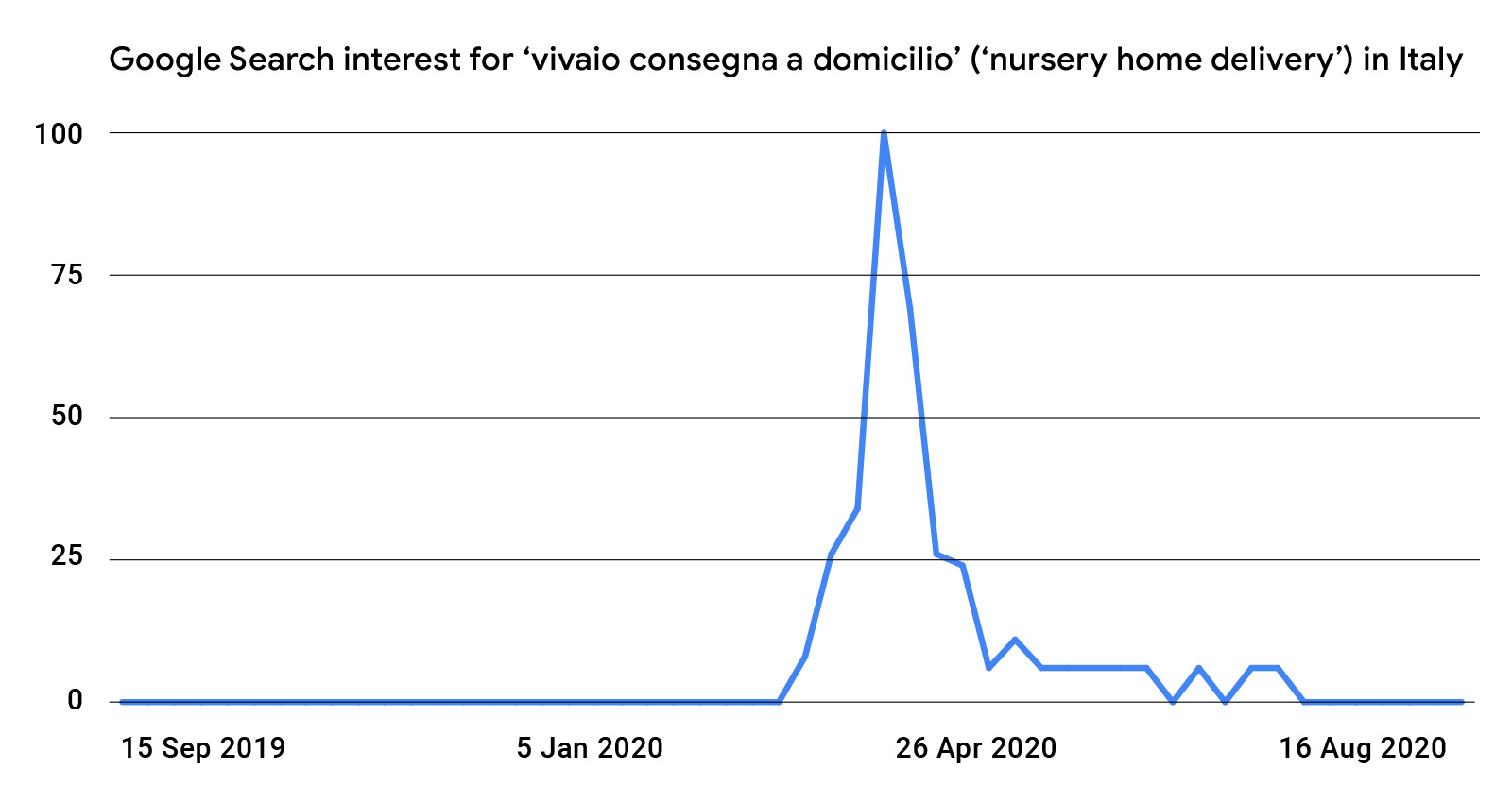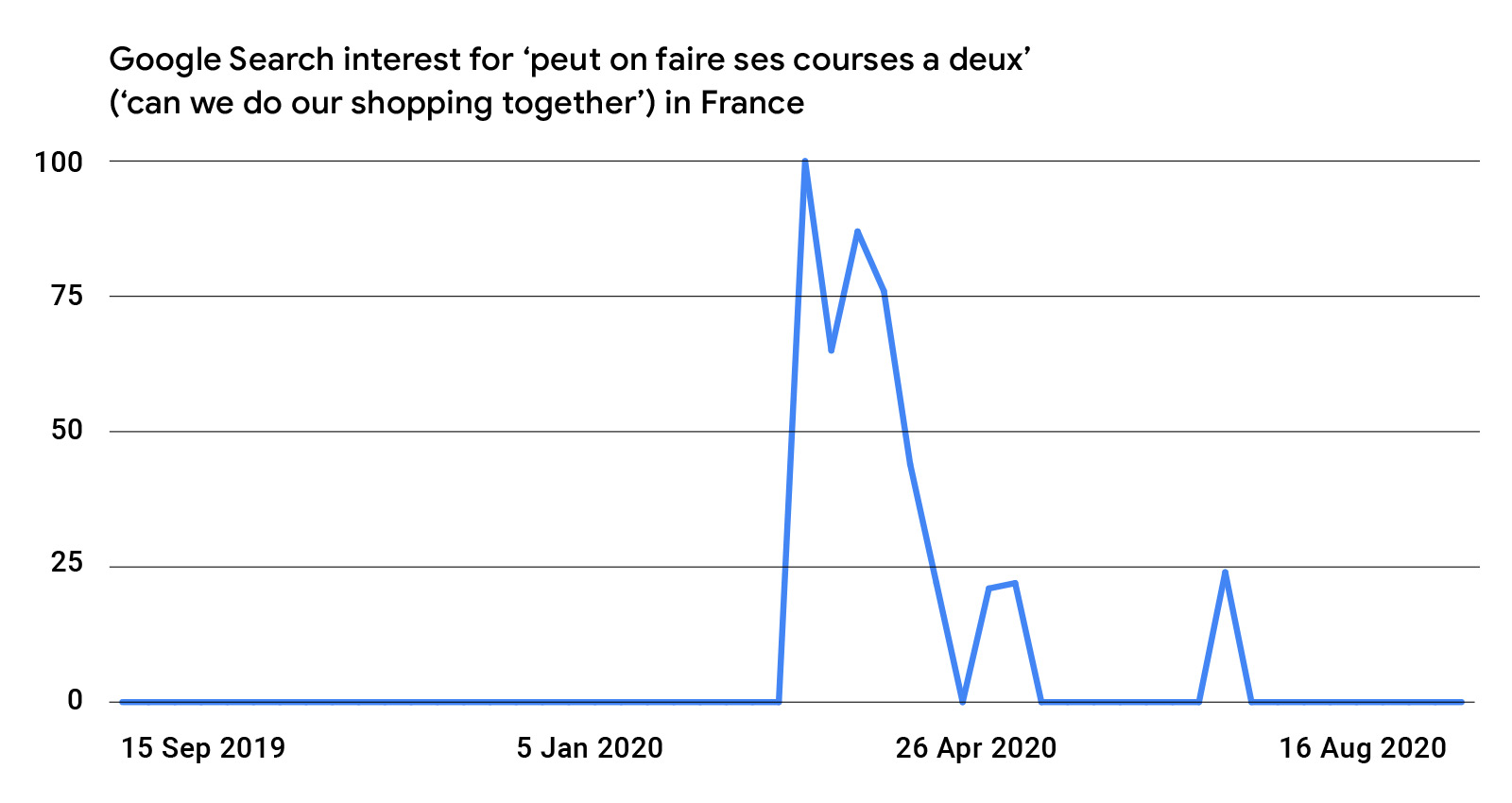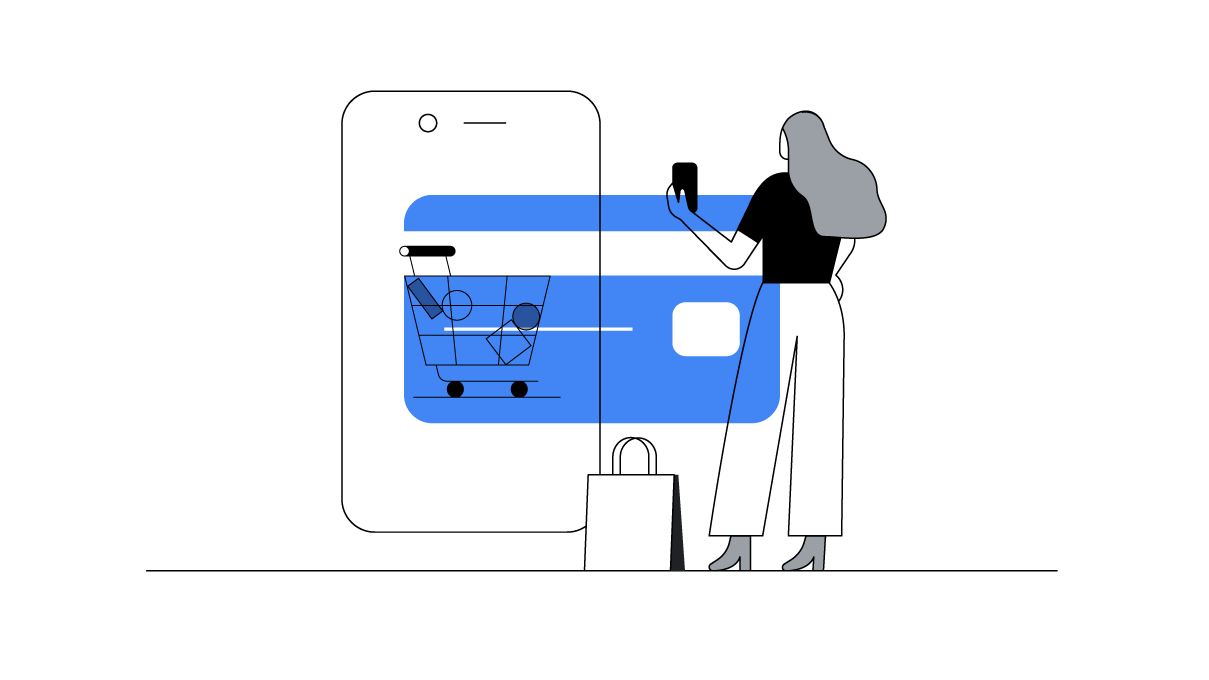Lucy Sinclair is the EMEA director of the insights team at Google, where she and her team analyse changes in consumer behaviour. In this consumer search insights series she highlights what is on people’s minds during this unprecedented time.
The coronavirus pandemic has accelerated changes in consumer behaviour, posing new challenges to businesses. Our regularly updated collection of EMEA search insights drawn from Google Trends put the spotlight on the biggest shifts to help you understand these changes in consumer behaviour, so you can continue to be helpful and relevant to your customers during this time.
While in the first six months of the crisis in EMEA we looked at how people made a living and what they did, knew, felt, and learnt, as we look towards the economic recovery and the impact beyond COVID-19, long-term behavioural trends have surfaced.
Four overarching themes have emerged:
- Consumers are driving businesses to innovate
- Consumers’ expectations are fluid across product categories
- Consumers have a heightened need for live information
- Consumers are driving major shifts in demand

While these themes are cross-vertical, this month in particular the search insights put the spotlight on how this has impacted the retail industry. Key areas covered include:
- A rise in search interest for virtual alternatives to what consumers previously did in-person, such as ‘virtual try on’ and ‘virtual pub quiz’
- Service expectations from one category cross to another, for example niche doorstep delivery asks such as ‘compost delivery’
- Consumers’ need for accurate, live information means it is more important than ever that retailers constantly update these details on their digital platforms
- Accelerated digital adoption has led to increase search interest for new products and categories, highlighting the importance of staying on top of changes in demand
1. Consumers are driving businesses to innovate: Searches increase for virtual alternatives, apps, and QR codes
With lockdown restrictions and store closures in place, the acceleration of consumers’ digital adoption during COVID-19 has seen innovative solutions emerge to tackle the new challenges that surfaced. Businesses had to get creative to help customers and deliver the service they were used to. We saw app downloads across a wide range of categories increase as consumers looked for niche apps to help address their new and immediate needs. Searches for ‘virtual try ons’ also saw a rise, while QR codes started to re-emerge and become commonplace again.

Google Trends indicates that in the last six months there have been spikes in searches for, amongst others, the general term ‘apps’ (‘افضل تطبيق توصيل’) in Saudi Arabia, ‘bicycle app’ (‘fiets app’) in Belgium, and ‘online shopping app’ (‘online shopping app’) in South Africa. Additionally, as consumers were restricted in their movements, they used digital channels more and more as an alternative. This has led to increased search interest for ‘virtual try on’ (‘virtual try on’) and ‘virtual pub quiz’ (‘virtual pub quiz’) in the U.K., ‘QR code scannen’ (‘qr code scannen’) in Germany, and ‘QR code’ (‘codice qr’) in Italy.
2. Consumers’ expectations are fluid across categories: Rise in niche delivery needs and promo codes
Because of the acceleration of digital adoption throughout the pandemic, consumers developed much higher digital expectations than before. And these crossed product categories, as they expected the same service across different industries. This included the ask for delivery to their doorstep for niche items such as 'compost', alongside an increase in demand for 'promo codes' in new categories.
When it comes to niche deliveries, search interest shows that consumers in particular tapped into this service to stay connected with friends and family, make celebrations as special as possible in unprecedented times, or to make the most of their outdoor space as they were constricted to their home. Google Trends shows a peak in searches for ‘nursery home delivery’ (‘vivaio consegna a domicilio’) in Italy, ‘compost delivery’ (‘compost delivery’), ‘afternoon tea delivery’ (‘afternoon tea delivery’) and ‘balloon delivery’ (‘balloon delivery’) in the U.K., ‘flower delivery’ (‘משלוחי פרחים’) in Israel, and ‘chocolate delivery’ (‘livraison chocolat’) in France.

And with online shopping on the rise for more product categories than ever, it’s not surprising that consumers started to look for promo codes more as well — and in new areas. Google Trends shows an increased search interest for ‘discount code’ (‘discount code’) in the home and garden category in the U.K., ‘discount code’ (‘código descuento’) for retail and food deliveries in Spain, and ‘promo code’ (code promo‘) for apparel in France.
3. Consumer expectations have heightened a need for live information: From shops ‘near me’ to new dos and don'ts
Because of the uncertainty and many sudden regulatory changes during the crisis, consumers' need for accurate ‘real-time’ information increased as well. This was especially true for the retail industry as consumers searched for local information on store (re)openings, shopping dos and don'ts, and even the ‘quietest time to go shopping'. This means it was — and is — more important than ever that retailers constantly update this information on all their digital platforms.
Search interest increased in particular for ‘near me’ searches, as shoppers were looking to fulfill their needs locally, and enquiries to understand when shops and services were reopening. Specific searches include: ‘shops near me’ (‘shop near me’) in South Africa, ‘salon near me’ (‘salon near me’) in the United Arab Emirates, ‘are dentists open’ (‘abren los dentistas’) in Spain, ‘recycling centres open’ (‘recycling centres open’) in the U.K., ‘nail studios opening’ (‘nagelstudios öffnen’) in Germany, and the more general ‘near me’ in Italy (‘vicino a me’) and Spain (‘cerca de mi’).

Alongside the local element, consumers were also keen to understand other specifics, such as if they were able to shop together and what opening times are. Google Trends shows an increased search interest for ‘can we do our shopping together’ (‘peut on faire ses courses a deux’) in France, ‘quietest time to go shopping’ (‘quietest time to go shopping’) in the U.K., ‘opening hours’ in Poland (‘otwarcia sklepów’) and Denmark (‘åbningstider påske’), and ‘opening times’ (‘öppettider påsk’) in Sweden.
4. Consumers are driving major shifts in demand: Rise in searches for new categories and products
With restrictions in place and consumers en-masse turning to online shopping to fulfill the needs of their personal situations, they drove a shift in demand for new categories and products. From the start of the pandemic, searches for the home and garden and electronics categories increased, alongside interest for products to help consumers entertain themselves and their kids, and items to make their lives more comfortable as they were spending more time at home.
Google Trends shows rises in search interest for electronics ‘for kids’ (‘for kids’) in the U.K.; beds, toys, etc. ‘for dogs’ (‘para perros’) in Spain; ‘games for girls’ ('jeux de fille) and ‘home cinema’ (‘home cinéma’) in France; yoga, Turkish cooking, etc. ‘for beginners’ (‘für anfänger’) and ‘4K monitor’ (‘4k monitor’) in Germany; ‘screen prices’ (‘اسعار شاشات’) in Egypt; ‘robot vacuum cleaner’ (‘robot aspirapolvere’) in Italy’; and ‘HD smart-led TV’ (‘hd smart led tv’) in Turkey.
You can use the interactive Rising Retail Categories tool, which updates daily with the latest Search insights, to stay on top of these constant changes in demand.
Explore more consumer search behaviour trends
You can view all our recent trends analyses in our search insights collection. While we provide a regularly updated snapshot of consumer behaviour trend changes and trends across EMEA, we understand it may be helpful to review the information more frequently, or for a specific country or region. To explore further insights, here are 10 tips for using Google Trends. By entering a keyword or a topic into the tool, you can explore what the world is searching for in near real time.






